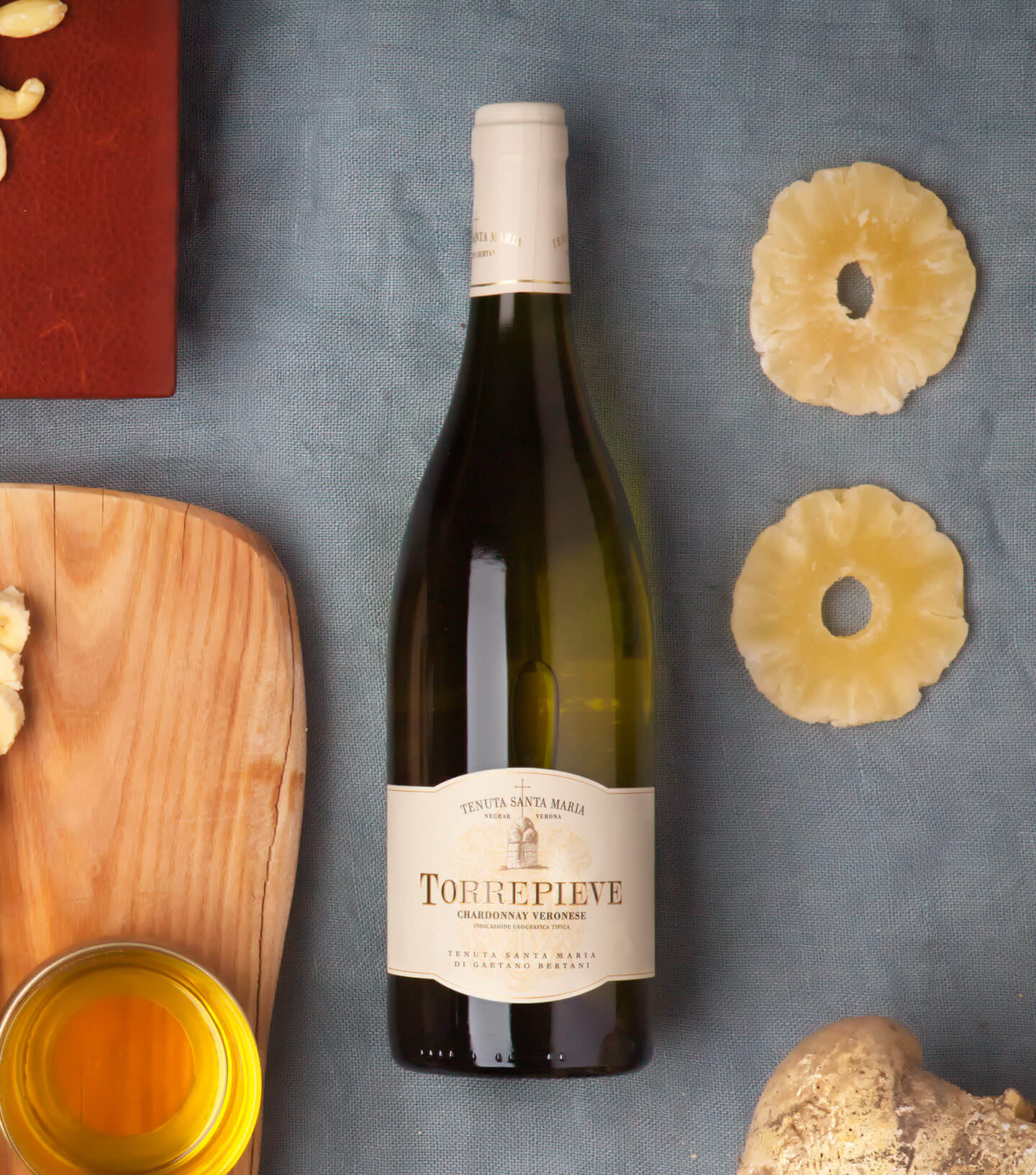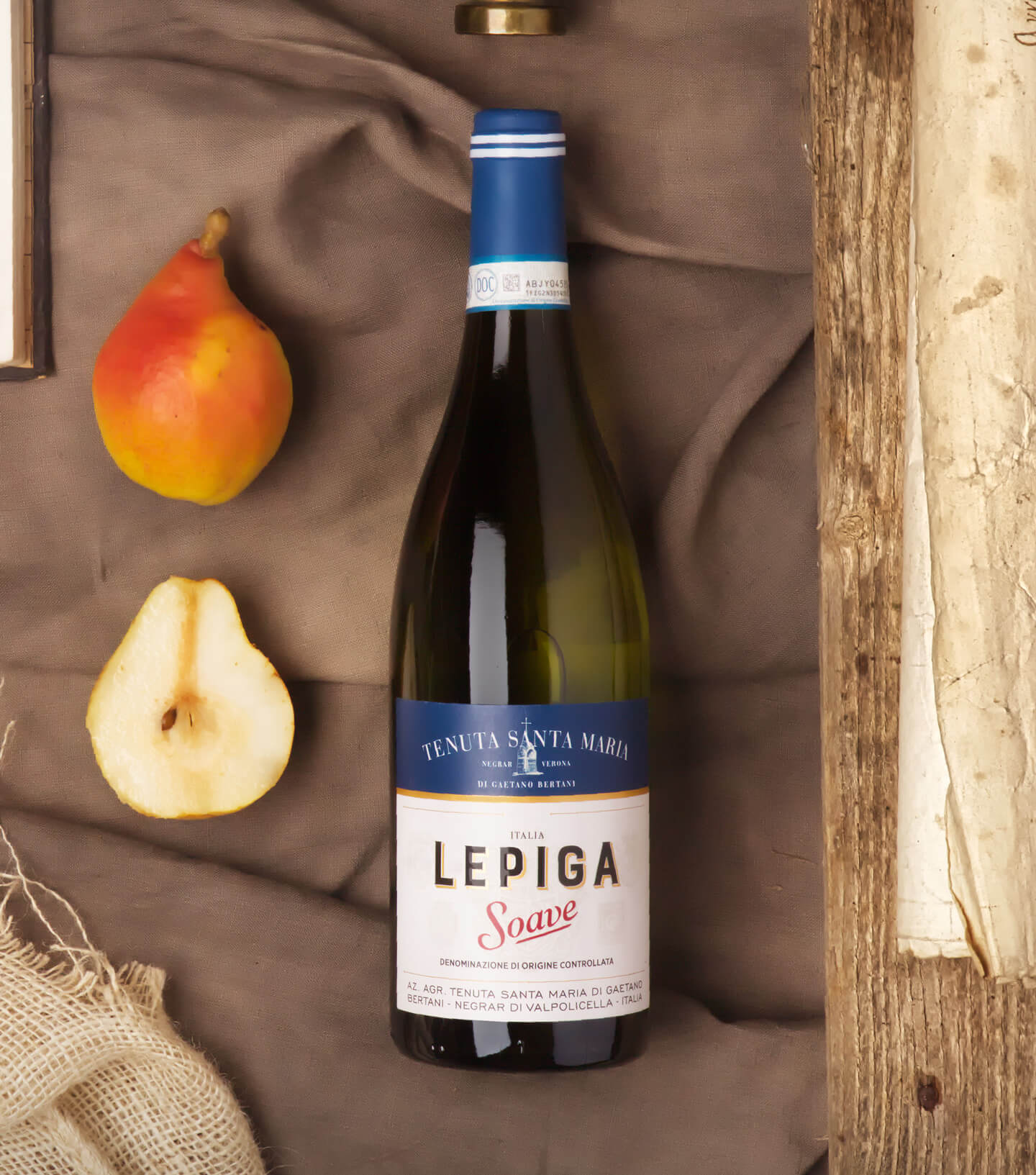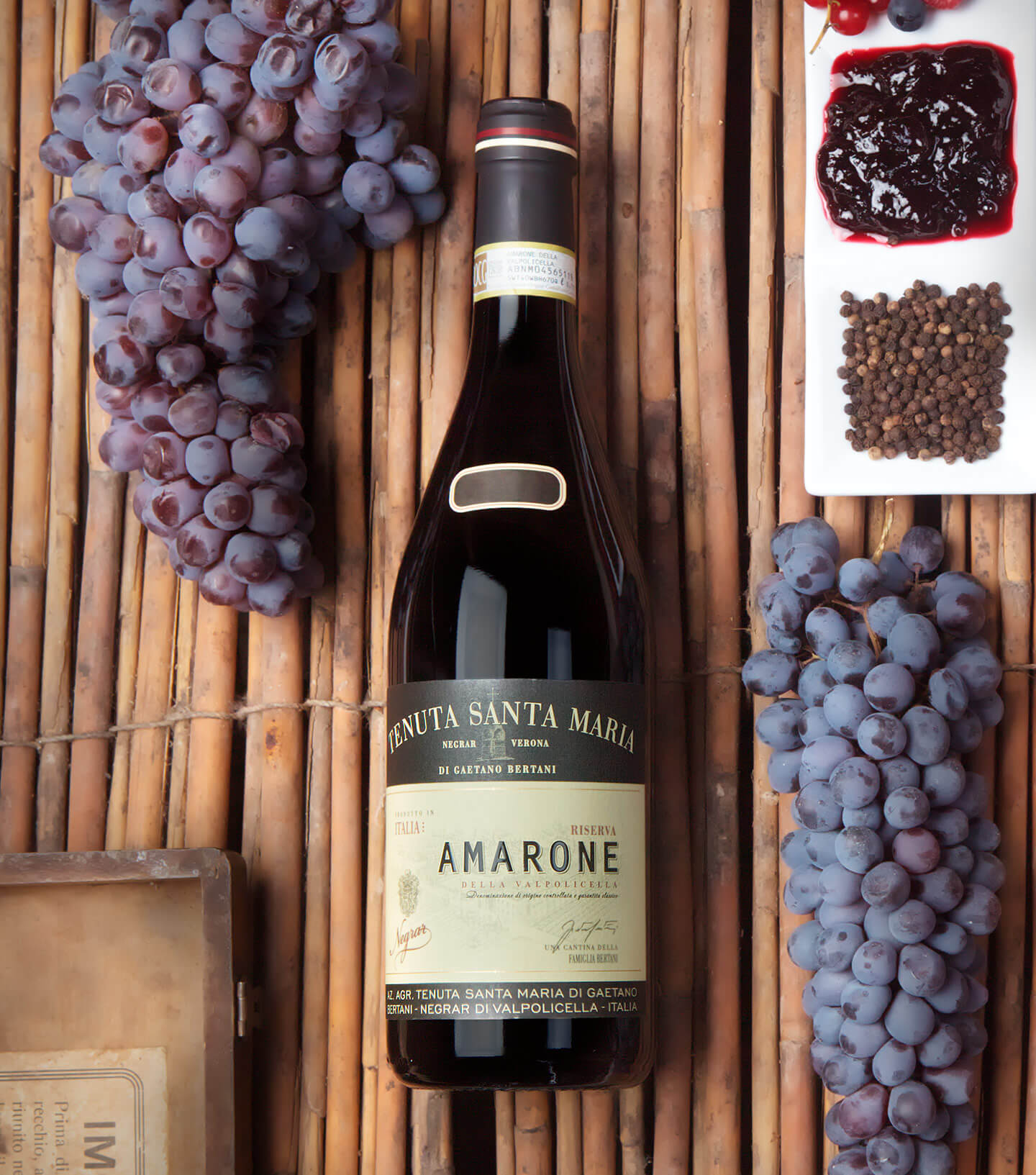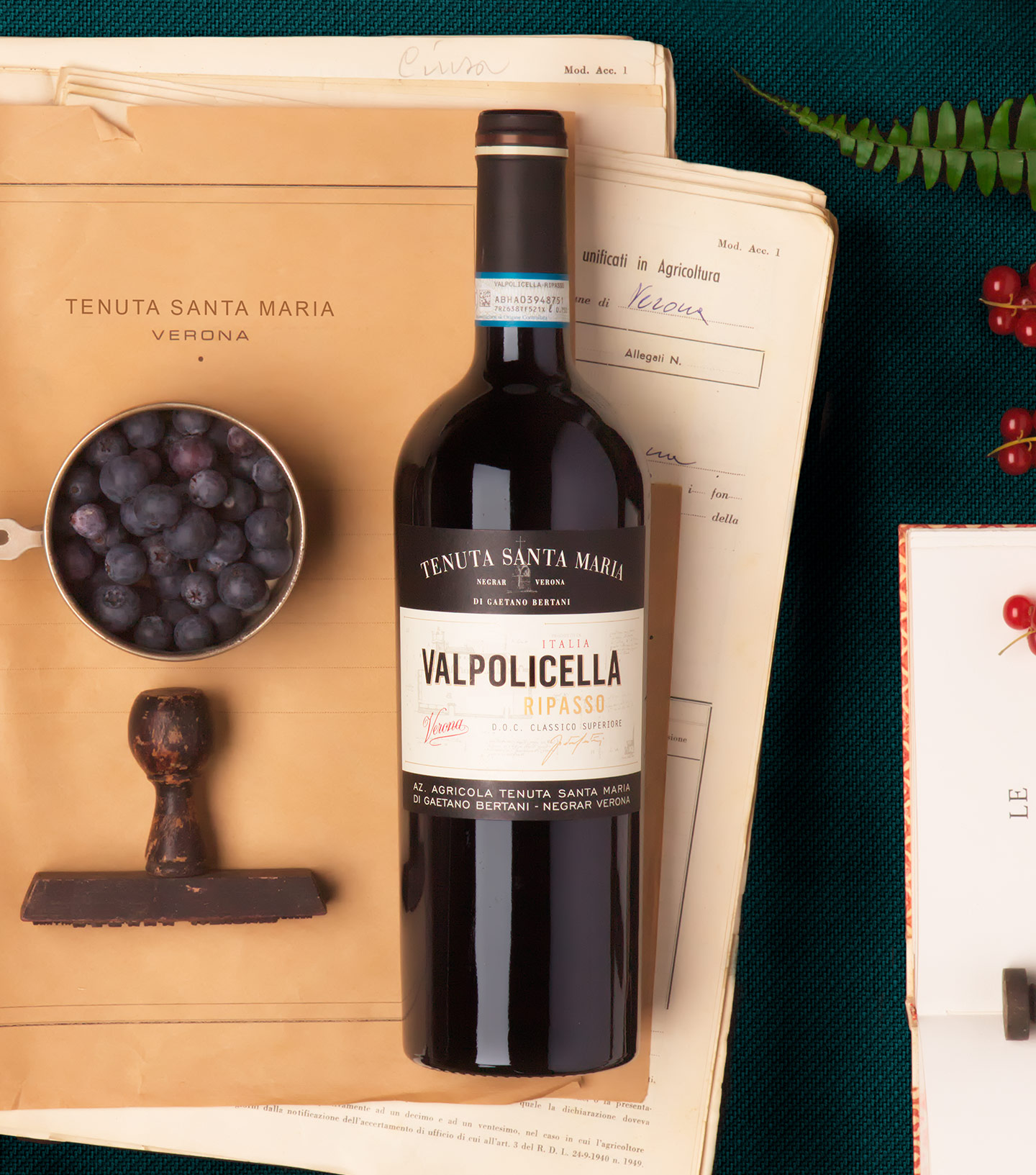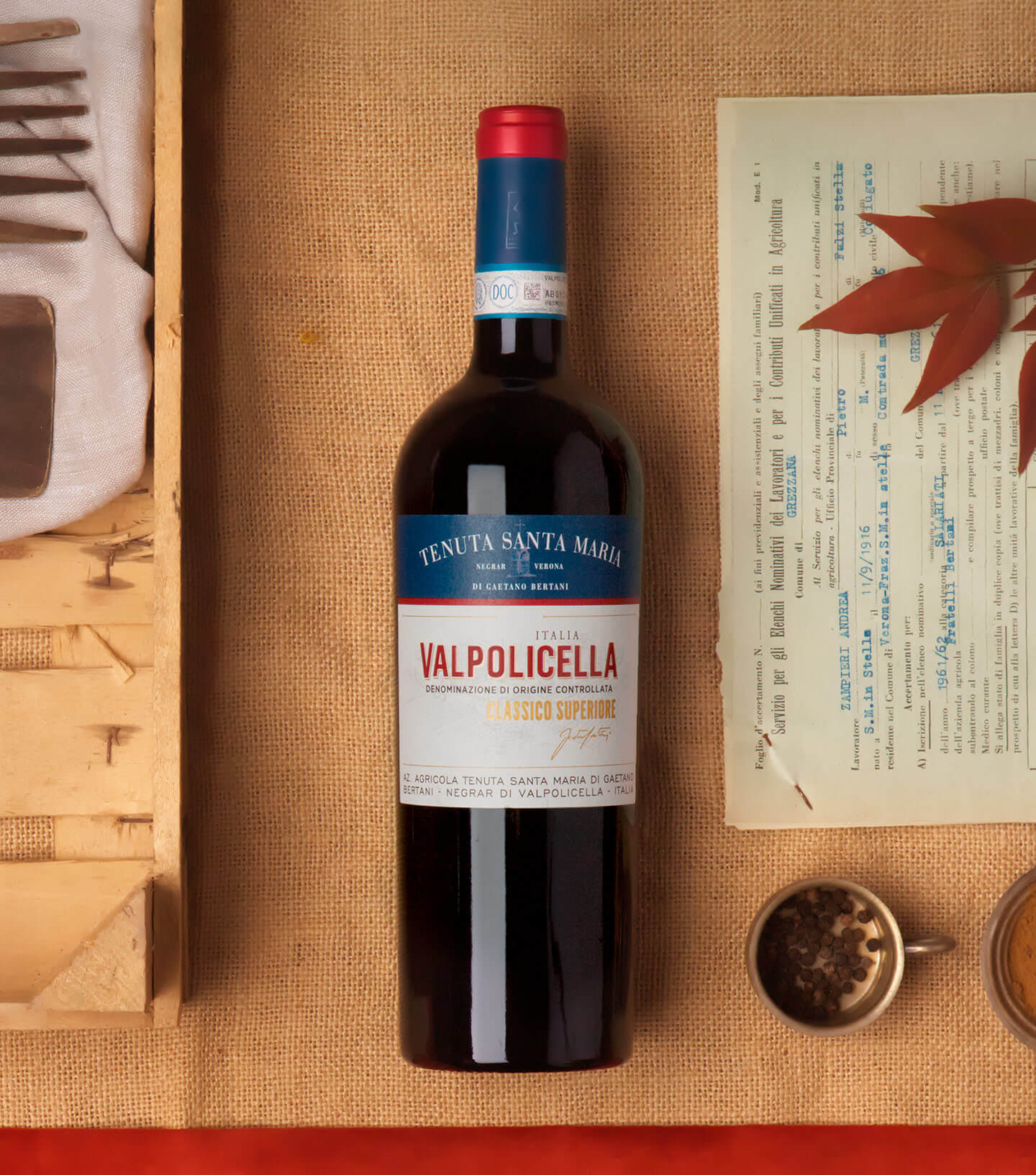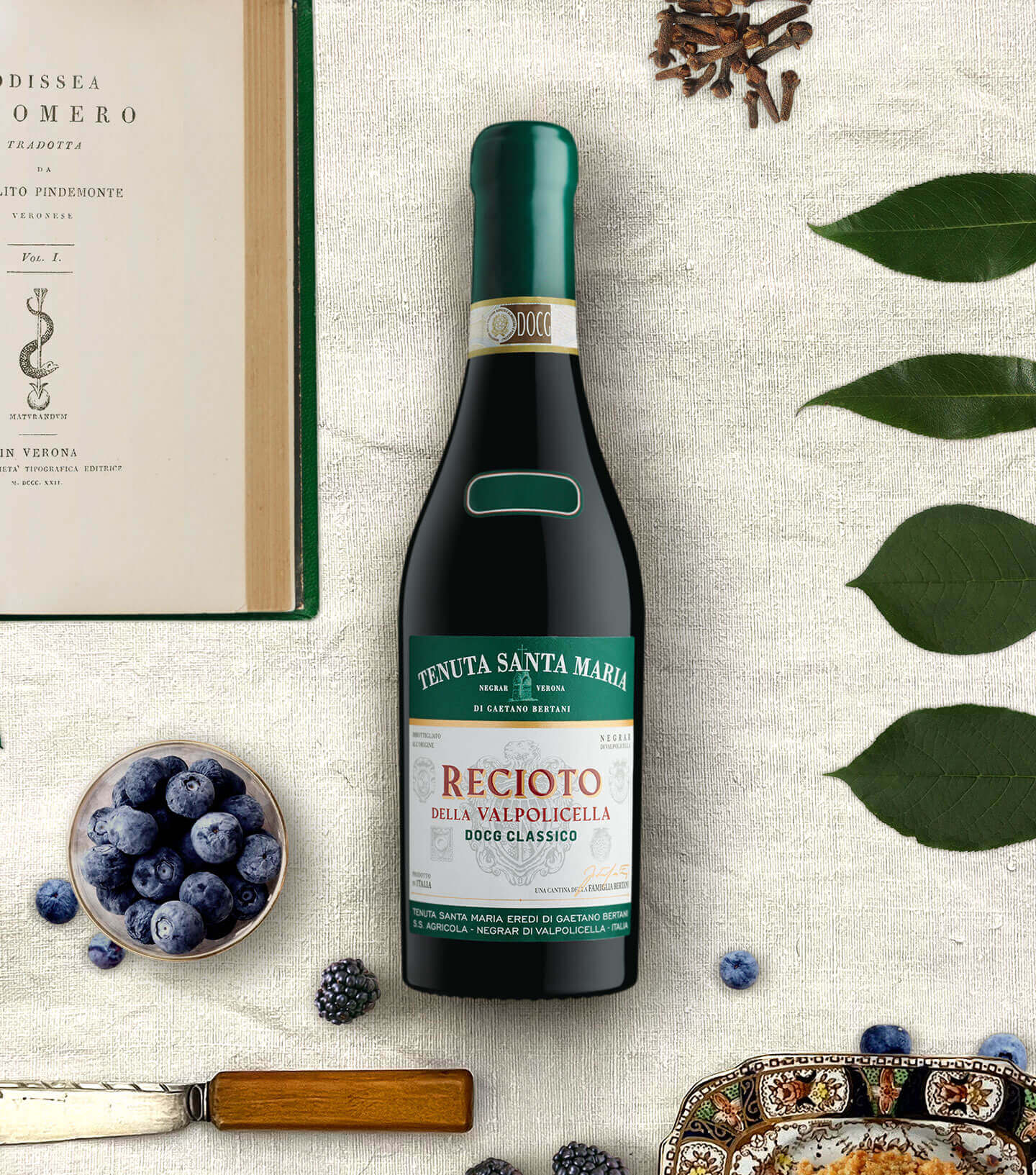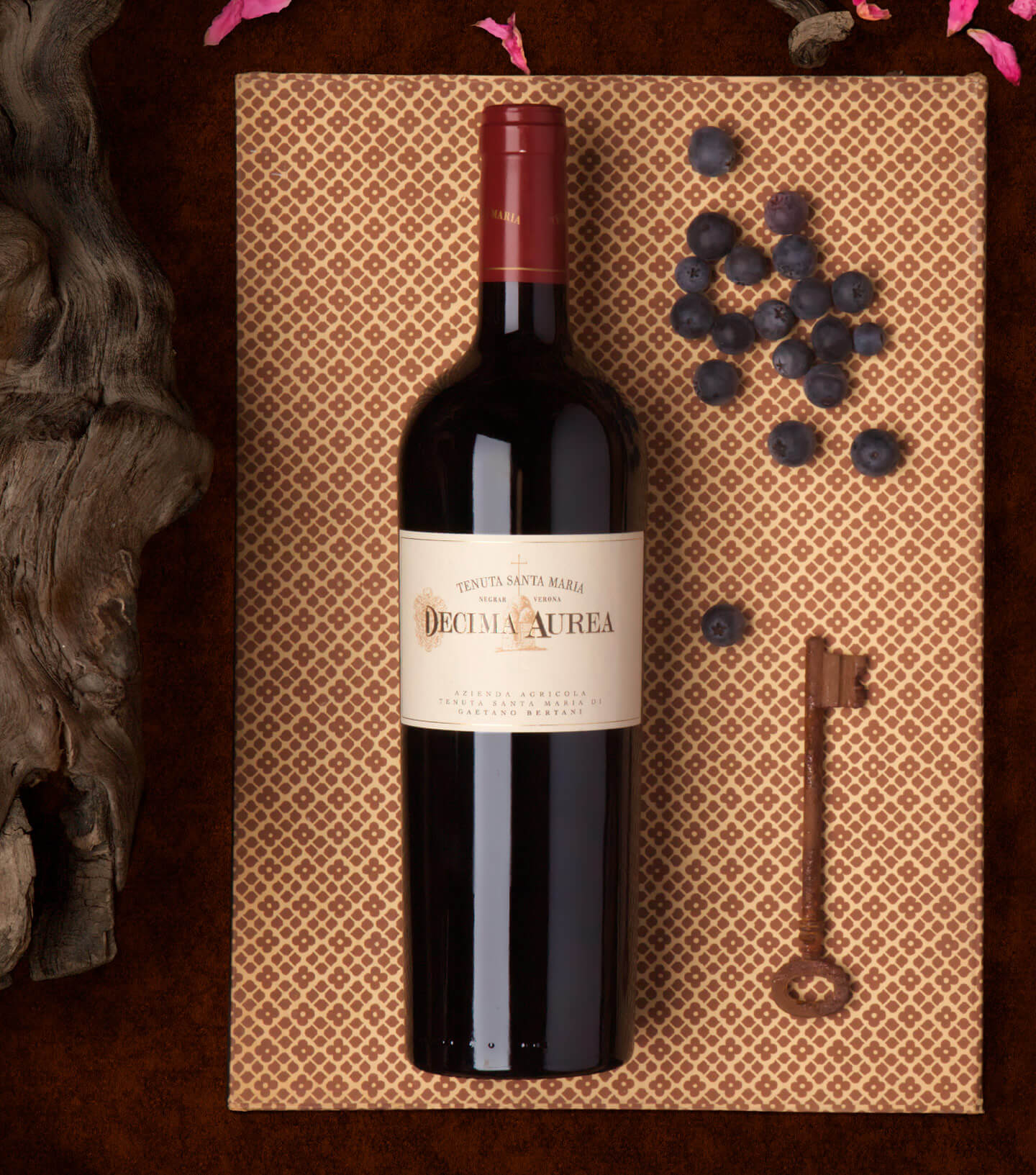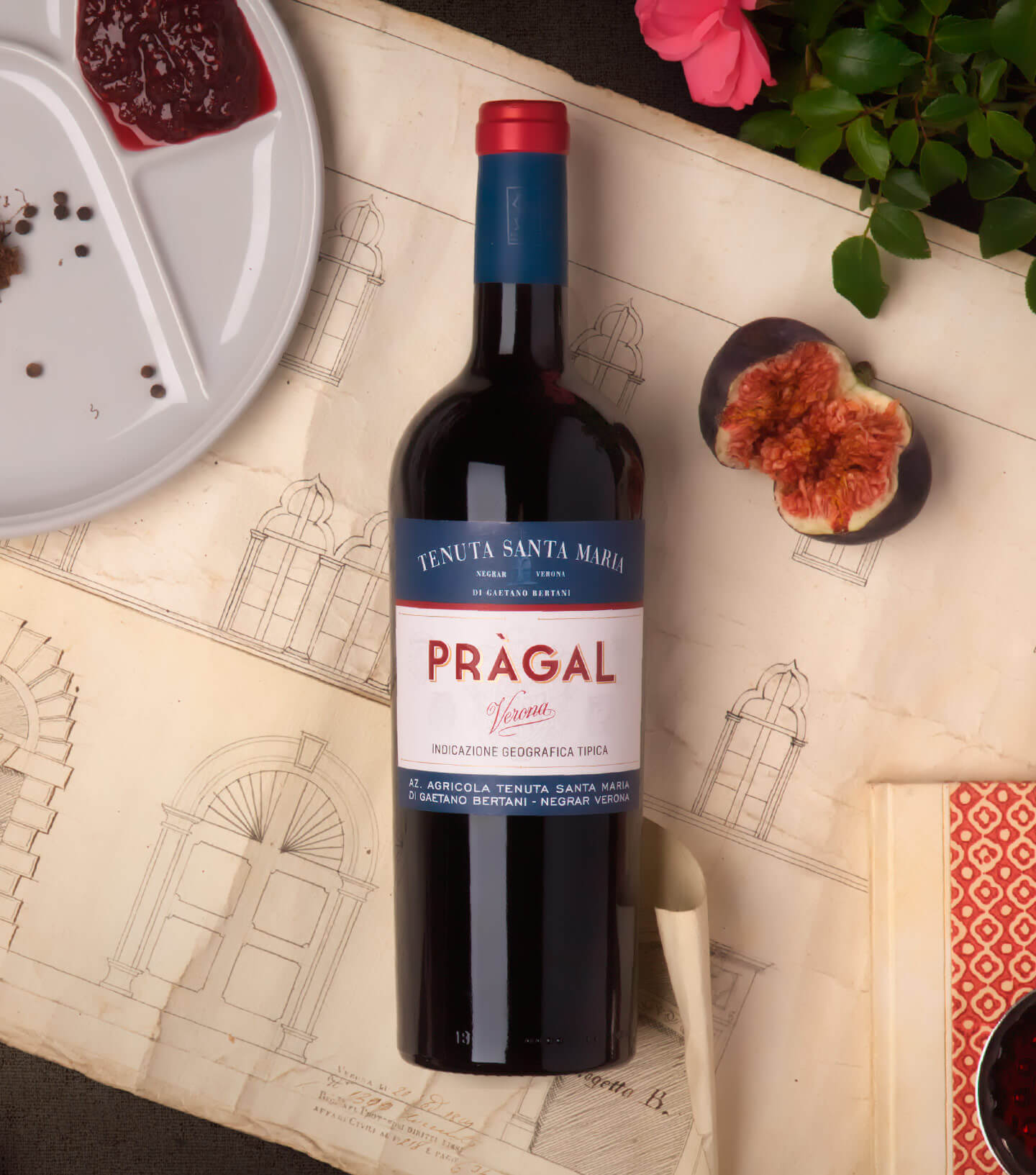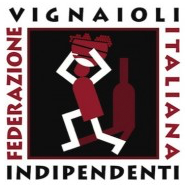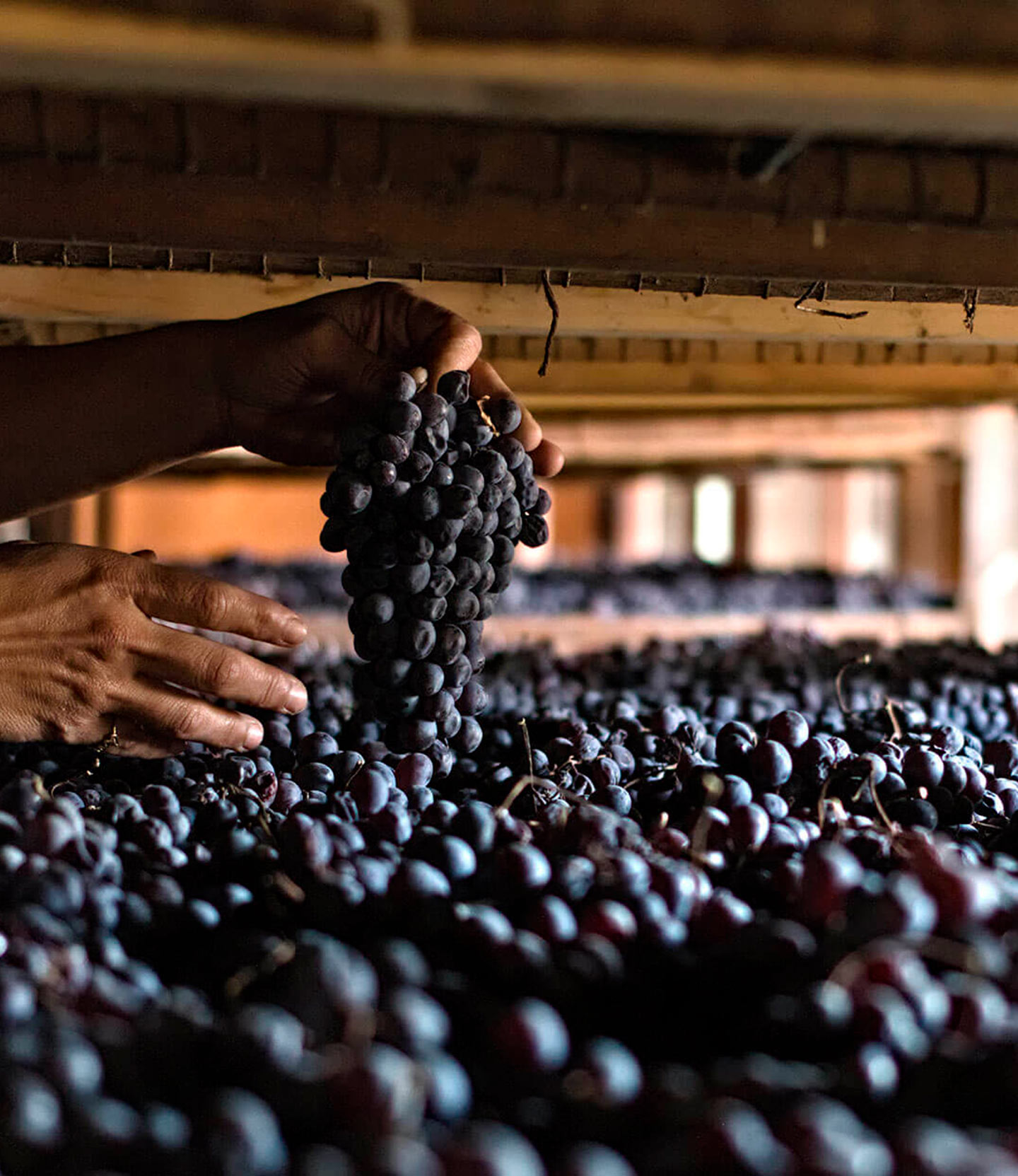
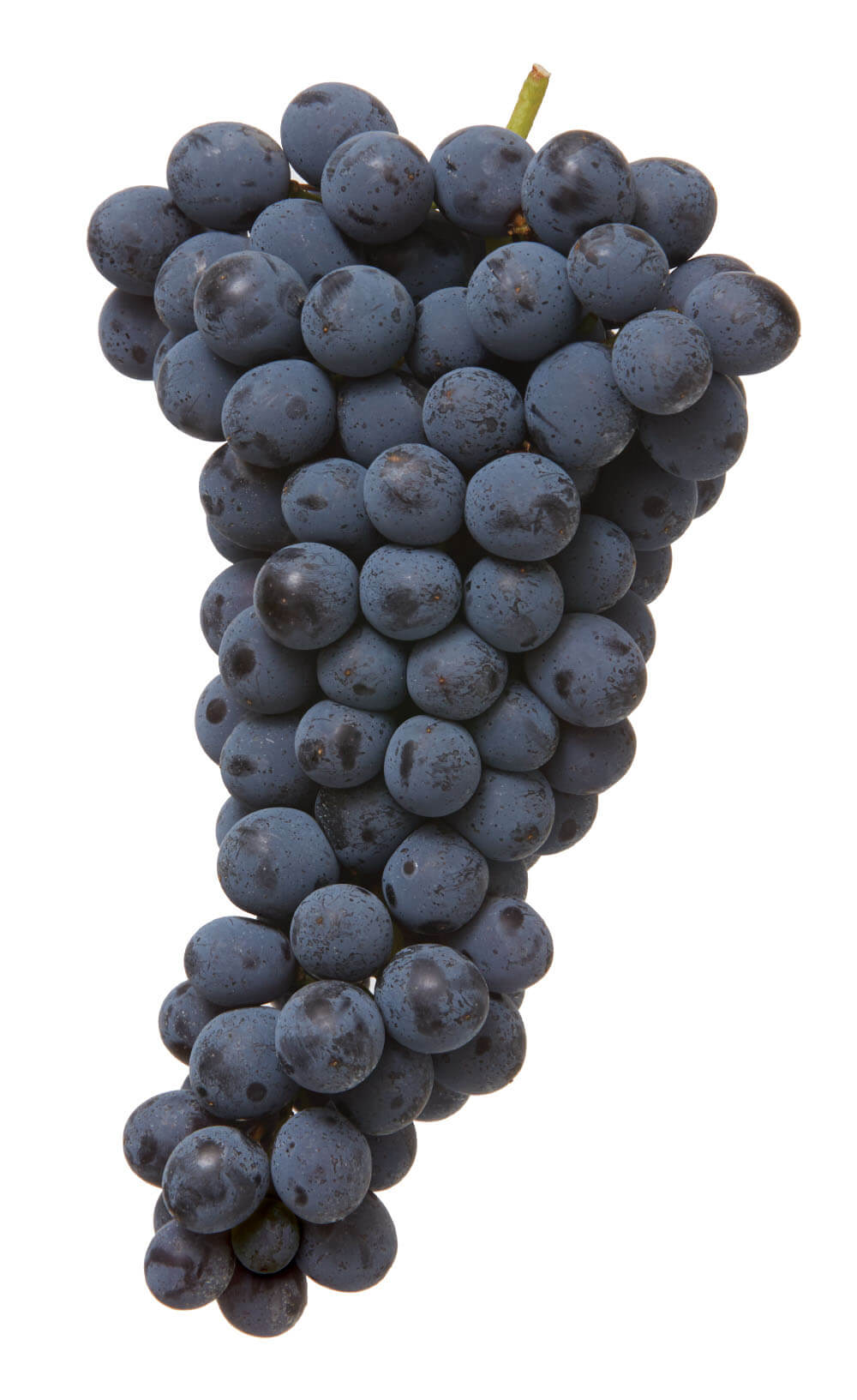
PHENOLOGY AND CULTIVATION
Valpolicella’s main cultivar is characterised by medium-sized clusters and its pyramidal-shape. The oval fruit has thick skin and is particularly suited to the Appassimento method. It is an exceptionally delicate grape in terms of sensitivity to diseases, humidity and sun exposure and has a potential for large yields that are kept in check with Guyot management. It is planted with medium density on Arbizzano’s deep limestone soils medium-rich in organic matter. It requires some irrigation in very dry years as it is also very sensitive to drought.
AROMATIC PROFILE
When correctly macerated and fermented at low temperature, Corvina is able to develop a wide aromatic complexity of red fruit aromas such as cherry, raspberry and wild berries, sweet spices, herbs and balsamic notes over fine tannins. With Appassimento and a long ageing, macerated fruit aromas are developed over an even finer structure and integrated enveloping glycerine.
WINEMAKING
Corvina is rarely used alone. Instead, we blend between 60% to 80% with more tannic cultivars like Corvinone and Oseleta, which contribute to the structure of the wine.
CHARACTERISTICS
Cherry – Prune – Chocolate
Good structure – Full body

PHENOLOGY AND CULTIVATION
Valpolicella’s main cultivar is characterised by medium-sized clusters and its pyramidal-shape. The oval fruit has thick skin and is particularly suited to the Appassimento method. It is an exceptionally delicate grape in terms of sensitivity to diseases, humidity and sun exposure and has a potential for large yields that are kept in check with Guyot management. It is planted with medium density on Arbizzano’s deep limestone soils medium-rich in organic matter. It requires some irrigation in very dry years as it is also very sensitive to drought.
AROMATIC PROFILE
When correctly macerated and fermented at low temperature, Corvina is able to develop a wide aromatic complexity of red fruit aromas such as cherry, raspberry and wild berries, sweet spices, herbs and balsamic notes over fine tannins. With Appassimento and a long ageing, macerated fruit aromas are developed over an even finer structure and integrated enveloping glycerine.
WINEMAKING
Corvina is rarely used alone. Instead, we blend between 60% to 80% with more tannic cultivars like Corvinone and Oseleta, which contribute to the structure of the wine.
CHARACTERISTICS
Cherry – Prune – Chocolate
Good structure – Full body
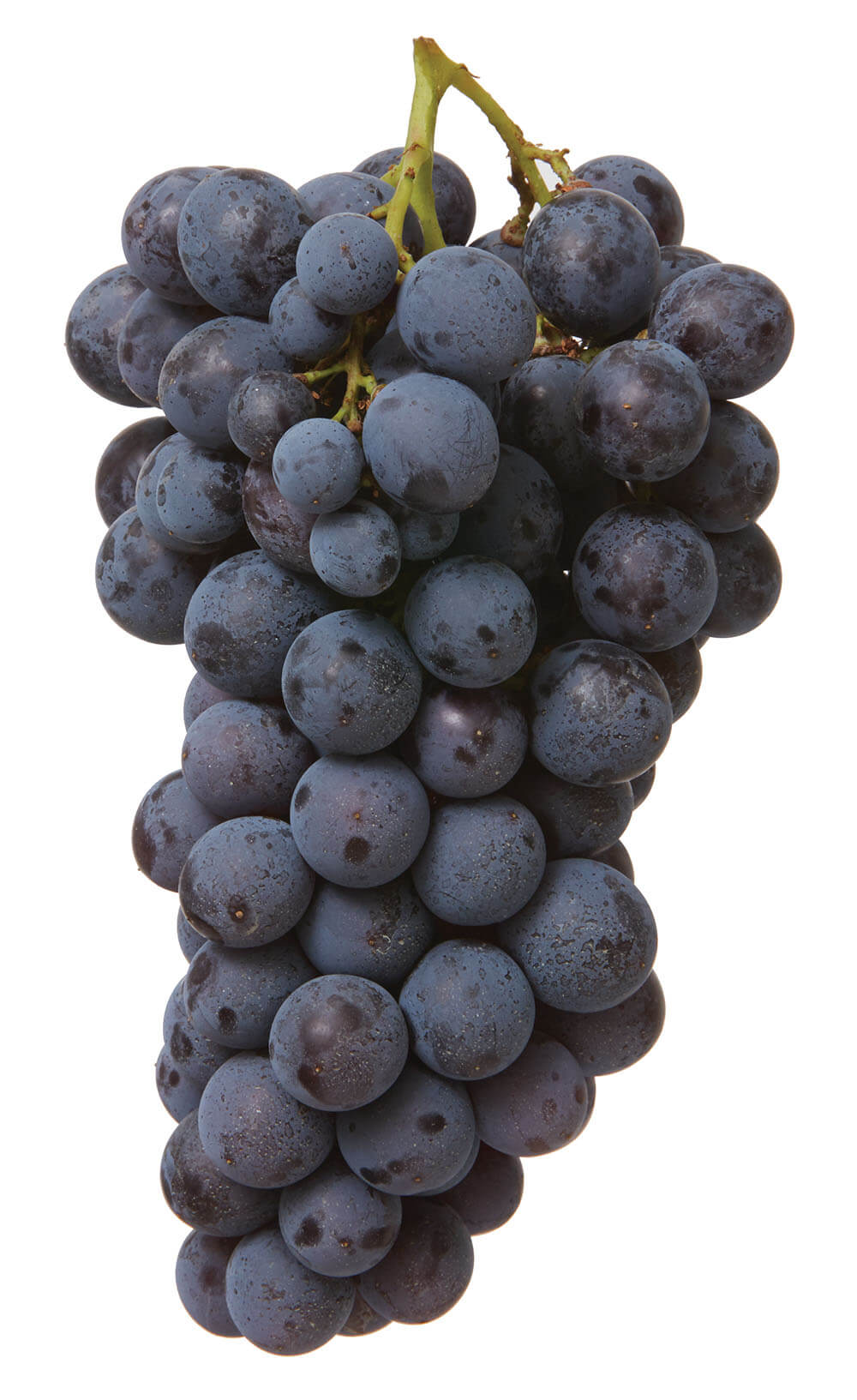
PHENOLOGY AND CULTIVATION
Originally considered a clone of Corvina, it has been considered a different biotype since 2003. It is cultivated separately at a medium density Guyot or Spurred Cordon system on terraced slopes exposed to the sun where it produces lower yields than Corvina. The soil has a high percentage of limestone and low organic matter. The bunches are large but loosely packed with deep blue ellipsoidal berries, well-suited to the Appassimento method.
AROMATIC PROFILE
Characterised by an intense cherry character, with compelling floral notes of violets and additional fruity notes of raspberry and blackberry. When compared to Corvina, it has a lower alcohol potential, a higher acidity and usually light vegetal notes if picked in a late harvest. Spicy notes of cocoa and tobacco emerge in aged wines. It has an important tannic structure.
WINEMAKING
Corvinone is never used as single varietal in wines, but we usually blend between 15% and 25% to support the less tannic indigenous cultivars, such as Corvina and Rondinella.
CHARACTERISTICS
Strong aromas – Spices
Velvety tannins – Complex body

PHENOLOGY AND CULTIVATION
Originally considered a clone of Corvina, it has been considered a different biotype since 2003. It is cultivated separately at a medium density Guyot or Spurred Cordon system on terraced slopes exposed to the sun where it produces lower yields than Corvina. The soil has a high percentage of limestone and low organic matter. The bunches are large but loosely packed with deep blue ellipsoidal berries, well-suited to the Appassimento method.
AROMATIC PROFILE
Characterised by an intense cherry character, with compelling floral notes of violets and additional fruity notes of raspberry and blackberry. When compared to Corvina, it has a lower alcohol potential, a higher acidity and usually light vegetal notes if picked in a late harvest. Spicy notes of cocoa and tobacco emerge in aged wines. It has an important tannic structure.
WINEMAKING
Corvinone is never used as single varietal in wines, but we usually blend between 15% and 25% to support the less tannic indigenous cultivars, such as Corvina and Rondinella.
CHARACTERISTICS
Strong aromas – Spices
Velvety tannins – Complex body
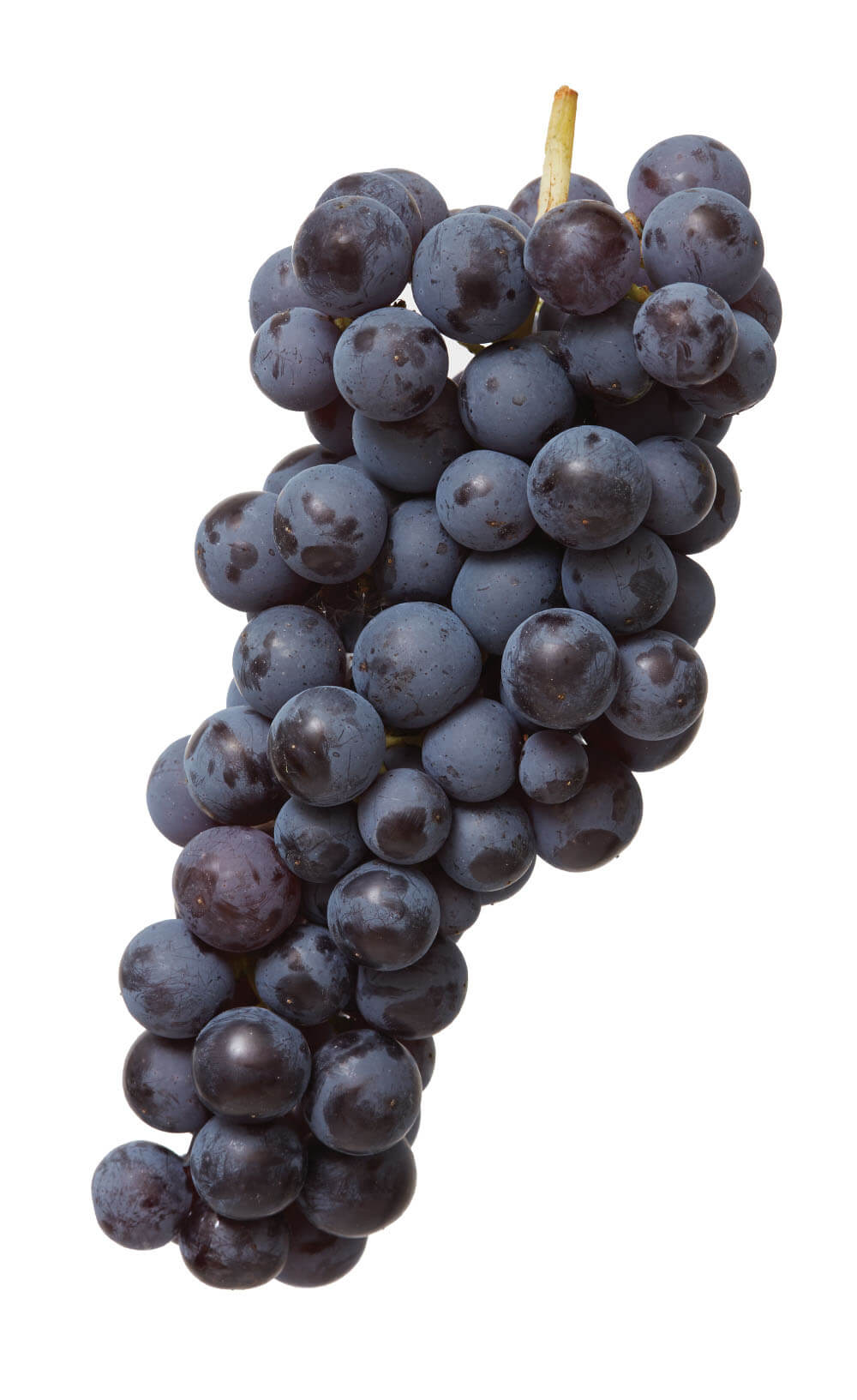
PHENOLOGY AND CULTIVATION
Rondinella is easily recognisable in the vineyard for its smaller, curved and compact bunches (compared to Corvina and Corvinone) and for its distinctive leaf. The berries are a very dark color, like a swallow’s feathers (rondinella translates to swallow). It has a constant production and is less sensitive to cold, dry and humid years and exposure to the sun. The thick skin is resistant to mould and suitable for late harvests or a more prolonged Appassimento to achieve a higher sugar content.
AROMATIC PROFILE
The cultivar produces wines of an intense ruby color with an interesting herbal and tobacco character, delicately fruity with hints of cherries. It is medium-bodied, has a good acidity and delicate tannins. It strongly contributes to Recioto’s character, as when dried it expresses peculiar prune, date and black walnut aromas.
WINEMAKING
Rondinella is rarely used as single varietal. We blend between 5% and 15% in our Amarone Classico Riserva and up to 30% in the Recioto Classico, as it is particularly rich in sugars and suited to longer drying.
CHARACTERISTICS
Red fruit – Delicate Acidity – Medium body

PHENOLOGY AND CULTIVATION
Rondinella is easily recognisable in the vineyard for its smaller, curved and compact bunches (compared to Corvina and Corvinone) and for its distinctive leaf. The berries are a very dark color, like a swallow’s feathers (rondinella translates to swallow). It has a constant production and is less sensitive to cold, dry and humid years and exposure to the sun. The thick skin is resistant to mould and suitable for late harvests or a more prolonged Appassimento to achieve a higher sugar content.
AROMATIC PROFILE
The cultivar produces wines of an intense ruby color with an interesting herbal and tobacco character, delicately fruity with hints of cherries. It is medium-bodied, has a good acidity and delicate tannins. It strongly contributes to Recioto’s character, as when dried it expresses peculiar prune, date and black walnut aromas.
WINEMAKING
Rondinella is rarely used as single varietal. We blend between 5% and 15% in our Amarone Classico Riserva and up to 30% in the Recioto Classico, as it is particularly rich in sugars and suited to longer drying.
CHARACTERISTICS
Red fruit – Delicate Acidity – Medium body
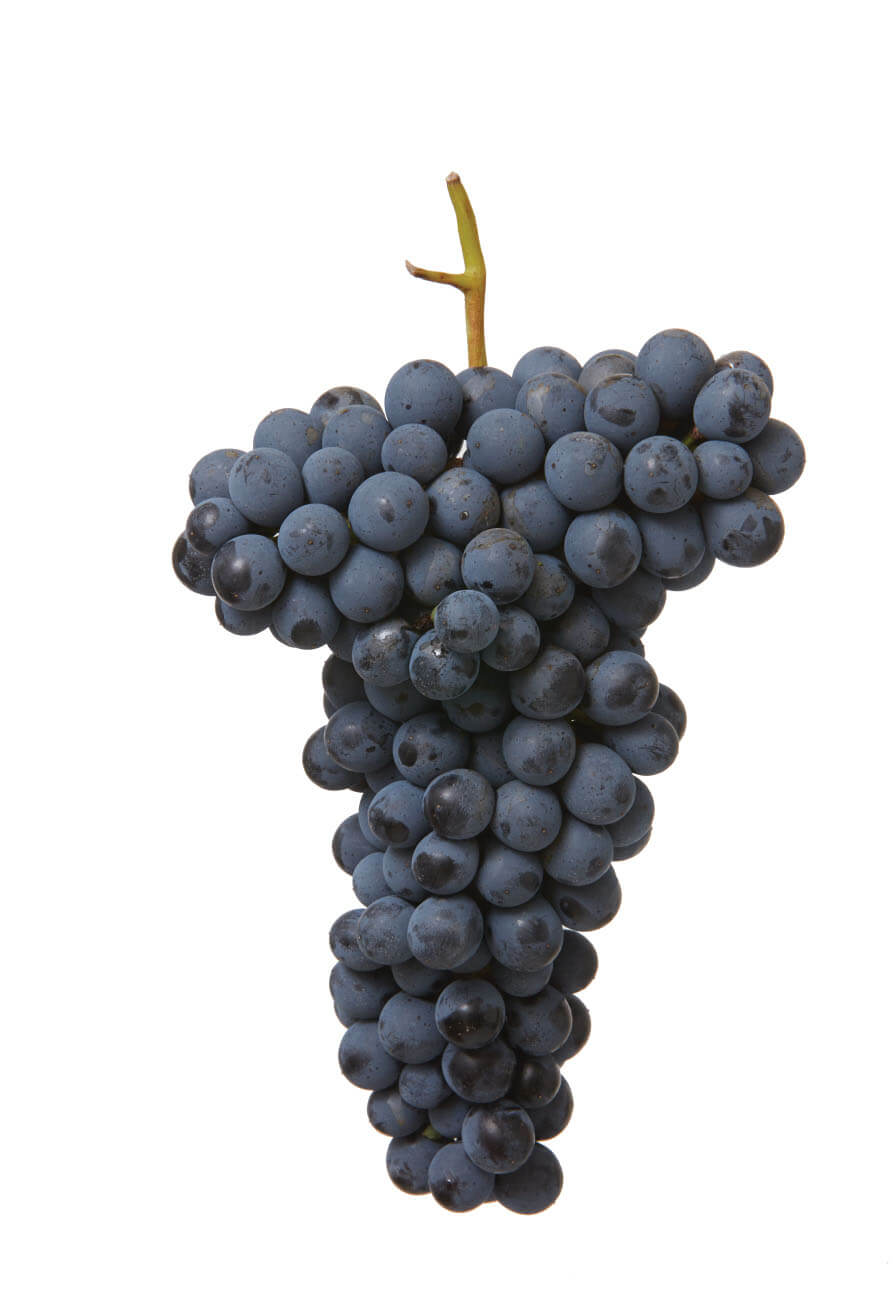
PHENOLOGY AND CULTIVATION
Very compact with small bunches and a high number of pips. Oseleta has a very low yield with little juice compared to the other varietals. The low juice content becomes even more apparent with the Appassimento method, where this cultivar has a faster evaporation rate and is often pressed earlier than the other cultivars when making Amarone or Recioto. It is fairly resistant to disease and is cultivated on site in plots with more gravel and sand.
AROMATIC PROFILE
Deep purple in color with ruby reflections, delicate violet aromas, intricate fresh herbal notes, blackberry flavours, cinnamon and when aged in the bottle, shows some tar and petrol character. It is notably tannic and if not harvested when it is sufficiently ripe, it can present an invasive unripe character.
WINEMAKING
When used as single varietal, Oseleta produces wines that have a very complex and interesting tannic structure. It is used in a lower percentage in Amarone Classico (5-7%), and in higher percentages in younger wines, bringing noteworthy elegance and complex aromas.
CHARACTERISTICS
Red fruit – Very delicate – Floral
Low yield – Deep color

PHENOLOGY AND CULTIVATION
Very compact with small bunches and a high number of pips. Oseleta has a very low yield with little juice compared to the other varietals. The low juice content becomes even more apparent with the Appassimento method, where this cultivar has a faster evaporation rate and is often pressed earlier than the other cultivars when making Amarone or Recioto. It is fairly resistant to disease and is cultivated on site in plots with more gravel and sand.
AROMATIC PROFILE
Deep purple in color with ruby reflections, delicate violet aromas, intricate fresh herbal notes, blackberry flavours, cinnamon and when aged in the bottle, shows some tar and petrol character. It is notably tannic and if not harvested when it is sufficiently ripe, it can present an invasive unripe character.
WINEMAKING
When used as single varietal, Oseleta produces wines that have a very complex and interesting tannic structure. It is used in a lower percentage in Amarone Classico (5-7%), and in higher percentages in younger wines, bringing noteworthy elegance and complex aromas.
CHARACTERISTICS
Red fruit – Very delicate – Floral
Low yield – Deep color


